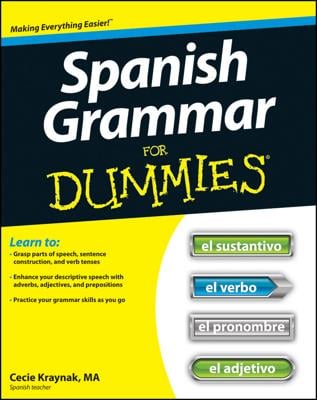The Spanish preposition de (deh) has several meanings: of, from, or about, depending on your context. De’s multiple personalities make using the word correctly a bit tough — unless you know the specific roles it can play in a sentence. Use the following list to help you remember what you can use de to show.
Possession

To express possession in Spanish, be sure to use the preposition de. For example, to say It’s Julio’s car in Spanish, you’d say Es el coche de Julio.
Origin
De can also be used to express one’s origin — where that person comes from. If you want to tell someone that you’re from Panama, you’d say Soy de Panamá (I’m from Panama).
Time
Like its fellow Spanish preposition a, de can be used to express a general time: No duerme de noche (He doesn’t sleep at night).
Cause
Use de to show the reason why something has happened. For example, to express that He is failing from not studying, you’d say Fracasa de no estudiar.
Material
De can also illustrate what something is made of. To describe a gold wedding band, you’d say Es un anillo de oro. (It’s a gold ring [literally, a “ring of gold”].)
Characteristics
Use de to describe the characteristics of an object or person: Es de buena calidad. (It’s of a good quality.)
Contents
To express the contents of an object, use de. For example, if you want to tell your coworker that you’re drinking a cup of coffee, simply say Bebo una taza de café. (I’m drinking a cup of coffee.)
Relationship
You can also use de to indicate a relationship: Madrid es la capital de España. (Madrid is the capital of Spain.)
Part of a whole
If you want to express that one object is part of another, larger object, use de. So to state that She’s taking a piece of bread in Spanish, you’d say Toma un trozo de pan.
A subject
De can also express the subject of something. For example, you’d say No encuentro mi libro de arte if you want to tell a friend I can’t find my art book.
A superlative

To express a superlative comparison, use de: Es el más alto de todos. (He’s the tallest of them all.)

